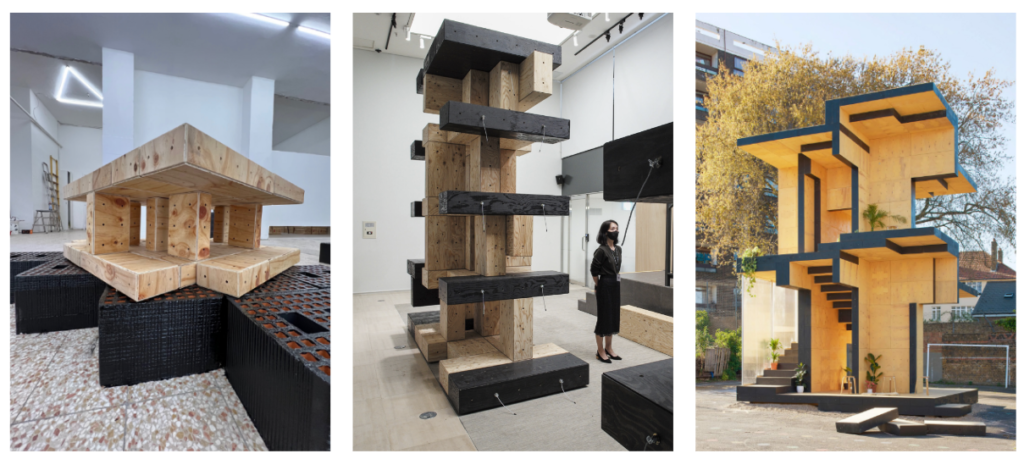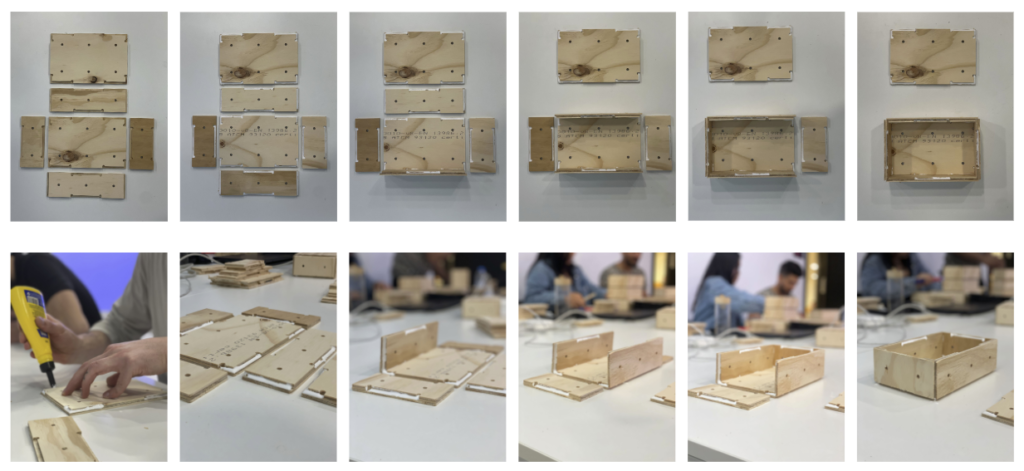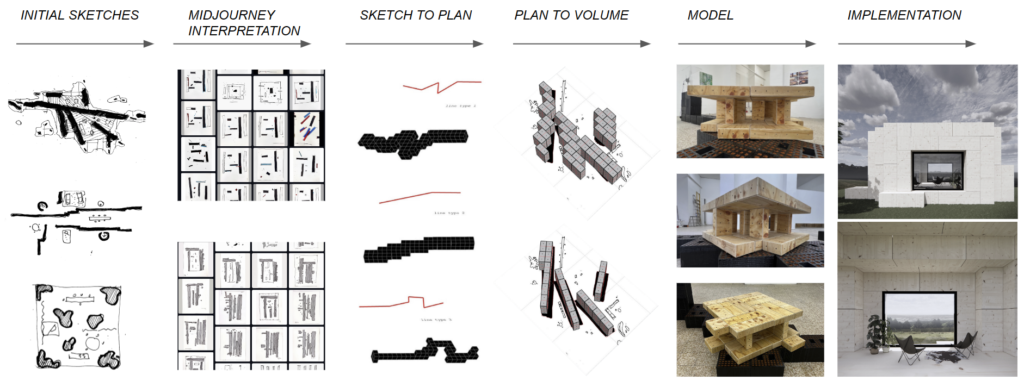Discrete Assemblies with Gilles Retsin
Introduction
How can primordial components be aggregated to form complex structures, that are at once easy to assemble and comfortable to live in? This was the question that defined our workshop with instructor Gilles Retsin.
During the workshop, Gilles introduced us to his system of assembling buildings from discrete components. The components are robotically manufactured plywood blocks that can be assembled together and post-tensioned with cables to maintain their position.

Image reference: Gilles Retsin
We worked with scaled versions of these larger boxes.

Design Approach
The workshop followed an iterative design approach of sketch, explore, build. Sketches were done quickly on paper. Explorations happened in Midjourney. Modifications were applied judicially, then the patterns were constructed with the physical parts.

The figures above and below illustrate the process, but it could more accurately be described as a feedback loop, with iteration occurring at each step.

Image reference: Gilles Retsin
An iterative process oscillating between focus (selection) and imagination (exploration) helped us to generate ideas and solutions to problems that otherwise wouldn’t have arisen in a strictly linear approach.

Blocks to Elements
Before designing, we took some time to develop some hands-on intuition about the components could be assembled together. Each group was assigned an element of a structure with which to experiment. Ours was a window.
We were surprised with the ability to obtain a very rigid cantilever with the blocks given proper post-tensioning, as illustrated in the figures below.



Sketch to Image
Next, our team of four sketched a series of images, which we fed into Midjourney for rapid idea generation. The sketches were fast and simple, loosely representing floorplans, but intentionally vague. We selected four to explore further with Midjourney.

Each pair of sketches was amalgamated into four variations, combining aspects of both parents.
We selected four that interested us.
After discussion, we selected on to develop further into plan and eventually a 3D model.
The slab floor was taken from the outline of the sketch.
We considered different resolutions (and the corresponding scale of the building associated with the blocks that would form the walls, pillars, and slabs).


When satisfied with our model, we assembled and rendered it.

Single Beam House
In the latter part of the workshop we were asked to explore a series of 6 houses prepared by the instructor. The intent was to to generate floorplans for the model and to look at how the single housing unit could be aggregated into larger structures.
A single beam was the defining feature of our house.



We looked at ways to organize the floorspace for living.

We again turned to Midjourney for rapid explorations of form, this time in the elevation as opposed to plan.

We explored many different possibilities for the aggregation of the units.



